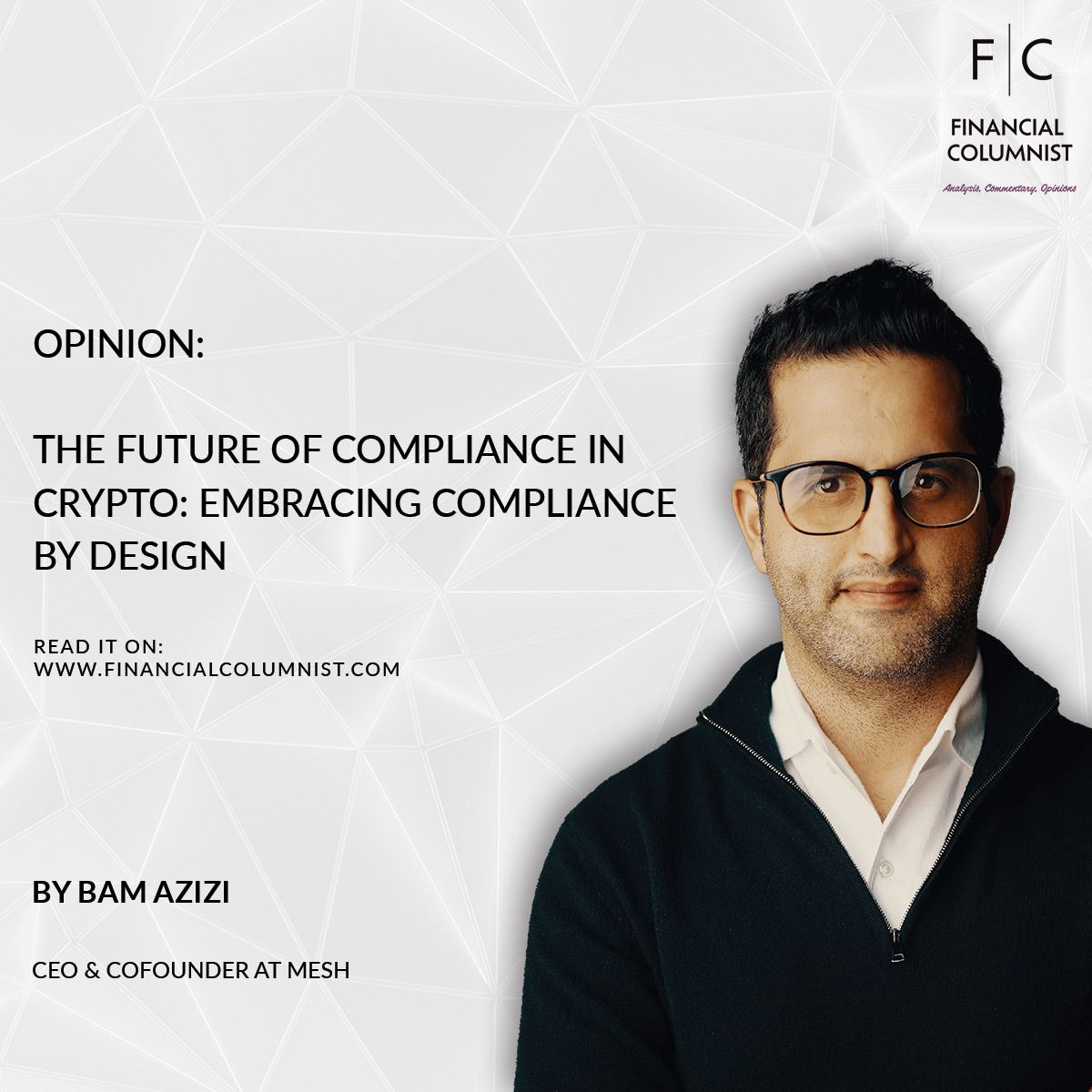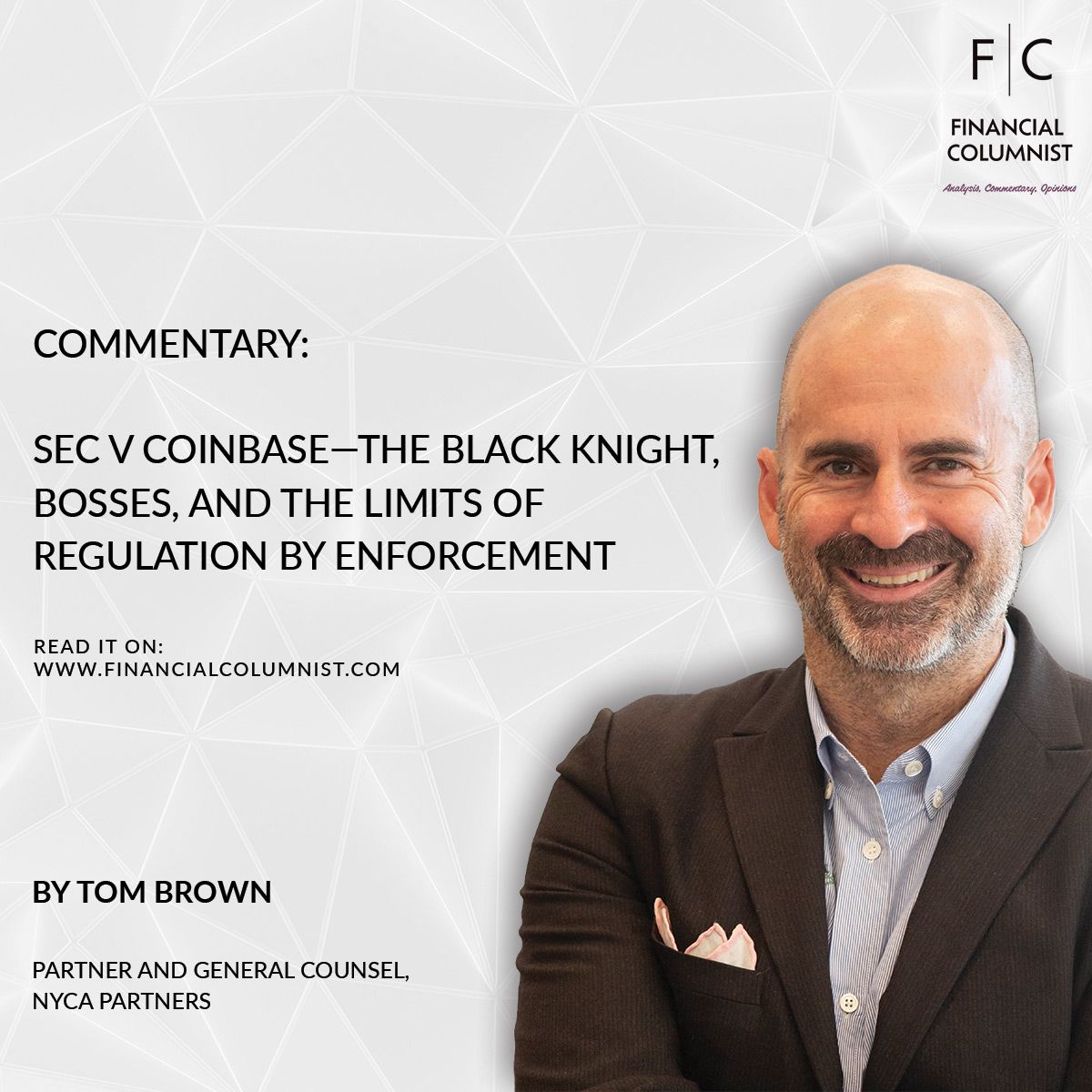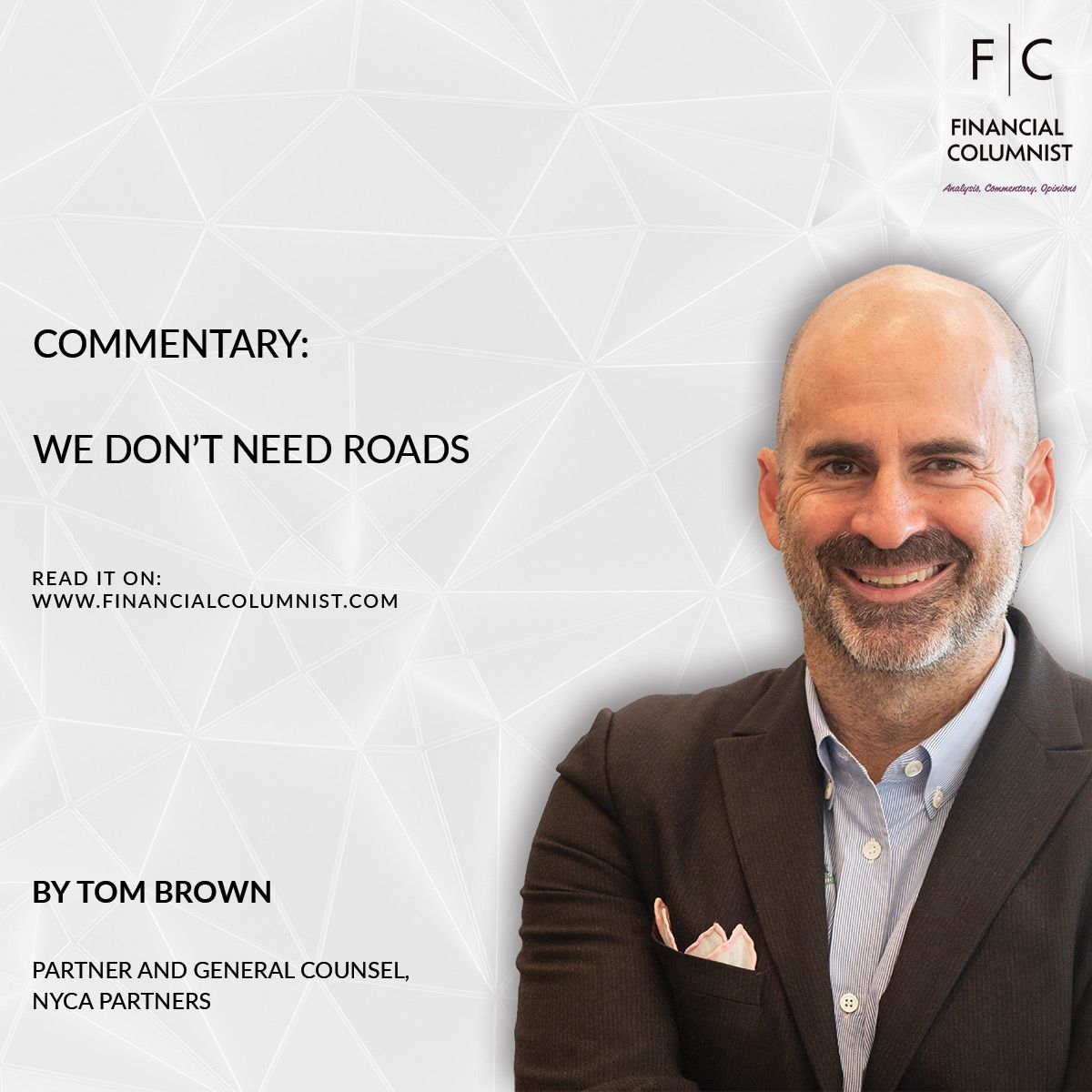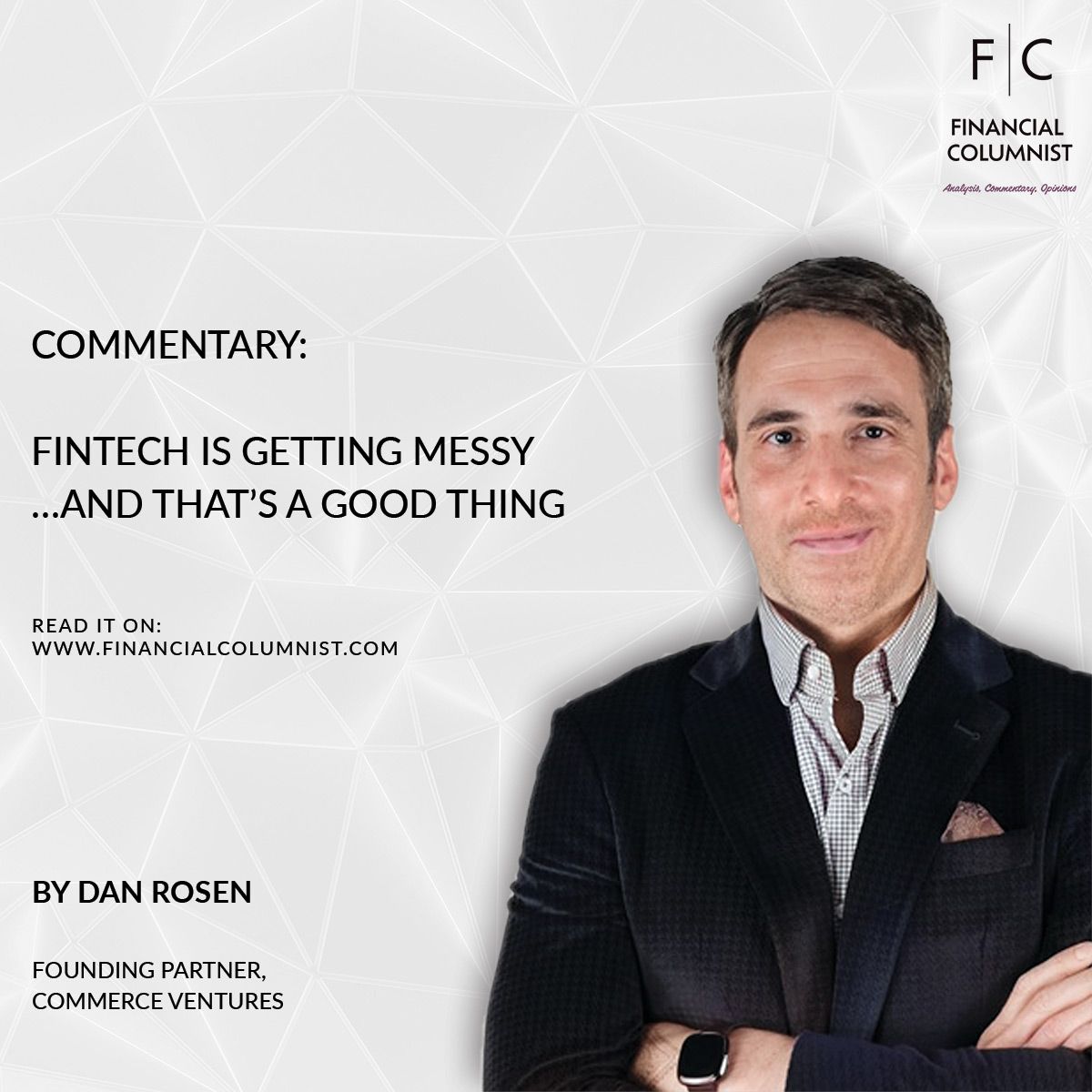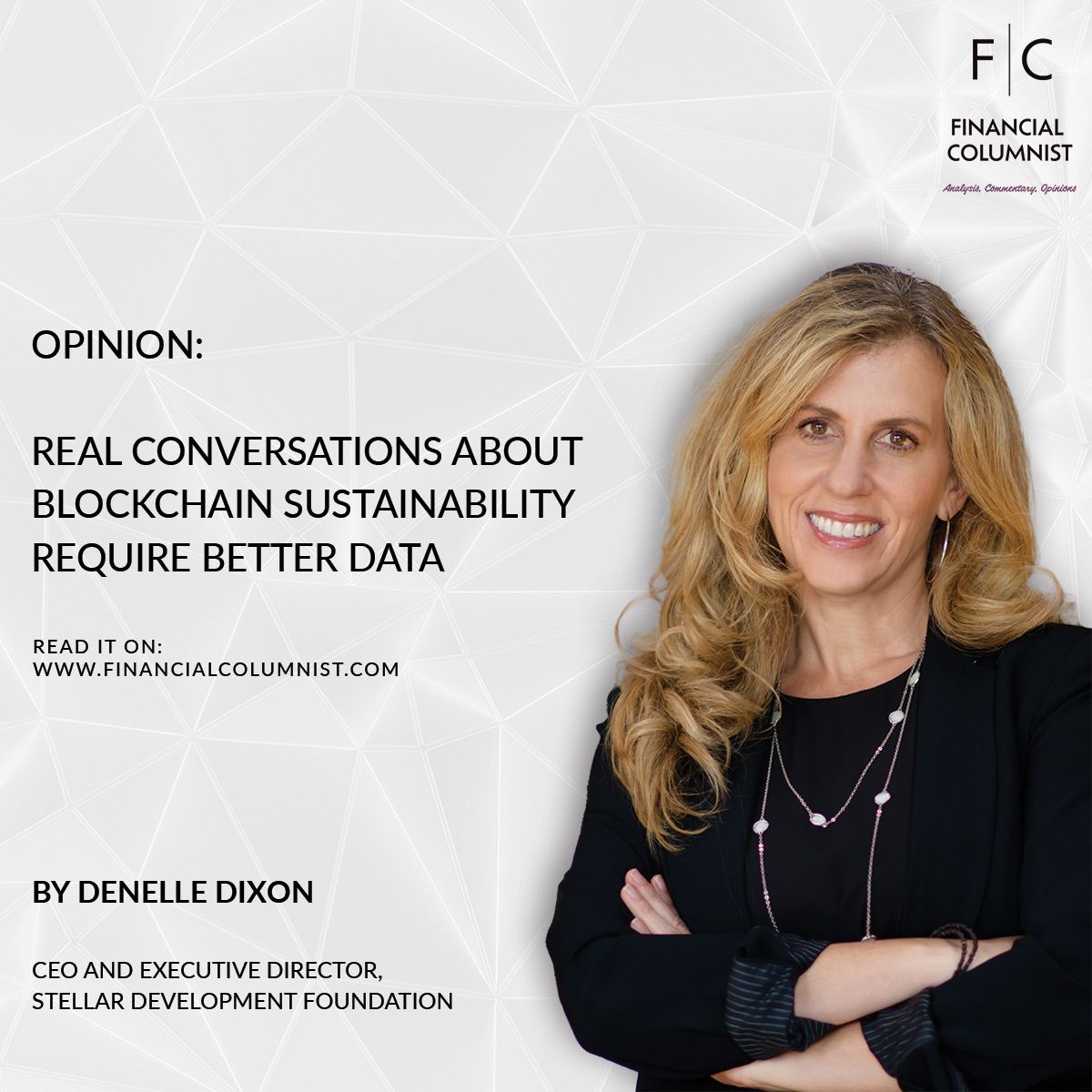Join 10,000+ readers
Analysis. Commentary. Opinions.
The Financial Columnist is a Financial Services publication featuring critical pieces published by thought leaders in the sector.

Read
The Future of Compliance in Crypto: Embracing Compliance by Design
Compliance has never been more of a burden on companies and organizations than it is today. This can be explained by several factors, including the rise in volume and complexity of financial crime, more opportunities and incentives to commit fraud or engage in money laundering, and the sheer number of laws and regulations that exist today compared to even 20 years ago, as regulators around the world try to remain one step ahead of bad actors.
SEC v Coinbase—the Black Knight, Bosses, and the Limits of Regulation by Enforcement
Judge Failla handed down her opinion on Coinbase’s motion to dismiss the SEC’s complaint in late March. Crypto enthusiasts, the FinTwit crowd, and even industry analysts paid little attention. The continuing saga of supervision of sponsor banks and the settlement of the injunctive class in the decades-long interchange litigation dominated the week’s agenda. I think the opinion merits more attention than it received. It sends an important signal of the limit of the SEC’s effort to regulate the digital asset industry. It also provides an opportunity to discuss the downsides of the use of enforcement to achieve regulatory objectives.
The MiCAR and Travel Rule Regulation Flight has now taken off! Will the flight be a turbulent one with a smooth touchdown?
Anyone who is directly or indirectly involved or remotely interested in the world of Cryptocurrencies has heard of the Markets in Crypto Assets Regulation (MICAR) by now. In short, MICAR aims to bring regulatory certainty and harmonisation in Europe by regulating Issuers and Crypto Asset Service Providers (CASPs) who wish to offer their services in Europe. This will result in CASPs and Issuers being able to passport their services across Europe, once authorised or registered in a chosen Member State. Notably, MiCAR is a direct regulation and not a directive. The raison d’etre for this is to leave out any room for potential regulatory arbitrage (although this will happen in other forms as I will briefly touch up on a bit later).
We Don’t Need Roads
For people of a certain age, those four words have a Proustian quality. When I read them, I flashback to the summer of 1985. I see Christopher Lloyd as Doc turn to Michael J. Fox as Marty McFly and utter the now-famous line. I can smell the sweet sticky perfume of buttered popcorn, new Coke, and Skittles that hung in the air. I remember, too, my shock the following February when President Reagan, with just the hint of a smirk, quoted the line in his State of the Union speech in an effort to urge young Americans, like me, to be optimistic about our collective future. All of that came rushing back a few nights back as I skimmed the highlights of the Federal Reserve’s 2022 triennial survey of payments in search of a way to explain a significant but seemingly overlooked change to the law of payments rolling out across the United States.
Fintech’s Emerging Role in Fighting Global Poverty
While today we often associate financial services with large banks, digital currencies, and payments as well as new apps and services, there are still places in the world where financial services is an analog experience – person-to-person and focused on building a community.
Will consumers pay with Crypto? Probably not
To say these are rocky times in the crypto sector would be somewhat of an understatement. As the US discourse has become increasingly vitriolic, many fear that US innovation across Web3 will be hampered—but what innovation would be missed? There have been too many scams, rug pulls, blind celebrity endorsements, and snake oil salesmen. As Circle’s Jeremy Allaire noted during their Converge conference last year, this is the time to realize a better future for the sector.
FinTech is getting messy…and that’s a good thing
Happy New Year, FinTech! Welcome to 2023, the year that FinTech really gets messy.
2023 - The Year of Crypto Myth-busting and Education
2022 was a whirlwind year for crypto, to say the least.
While the year started off strong, with real technological advancements and excitement about its potential, there were noticeable challenges. Overnight support in the millions to Ukraine, 1 billion donated in COVID relief, and legislative gains in the EU and Asia, were accompanied by headlines around Terra Luna, Celsius, and Three Arrows. At the end of the year, the latest revelations about FTX and the alleged criminal activity of a small group of people within the company sent massive shockwaves through the entire crypto industry. Given its importance in the space, the contagion and fallout may not be over.
If there is one message that came across loud and clear, it’s that regulatory clarity is needed – and it’s needed now.
Real conversations about blockchain sustainability require better data
Sustainability. It has become a loaded topic generally and even more so in the blockchain industry. Unfortunately, the mainstream conversation has led to a lot of misconceptions about blockchain’s environmental impact. Regardless of how familiar one is with the applications of blockchain technology or use cases for cryptocurrency, mentions of blockchain and proof-of-work consensus mechanisms are now synonymous with high energy use—without a parallel focus on the actual value being generated behind the energy use.
Knowing Where the Buttons Are (or Why Every FinTech Should Have a Good Lawyer Around)
I often get asked why I made the switch from lawyer to investor. Usually, it is from lawyers slightly jealous that I no longer need to account for my time in six-minute increments and sometimes from financiers slightly wary that I am encroaching on their turf. Although there is no single answer to that question, I thought the launch of this column would be a good place to lay out why I did what I did and what I believe every entrepreneur building in the FinTech space should look for in a lawyer.
Equity Through a DEI Lens: When Equity Doesn't Drive Equity
Throughout time, the approach to compensation has largely remained the same. From factory shift workers in the industrial revolution to the information-age employees of today, companies pay by the hour or annually based on the business requirements for the role, the candidate’s experience, and the competitive labor market rates at the time of hiring.
Over time, companies began to introduce the idea of “total compensation” as they started to offer benefits such as medical and dental coverage, retirement savings, and other programs, as well as bonuses either for individual or company performance. However, if you ask any worker how much they make, you’ll hear their hourly rate or an annual salary, almost none will say they made thousands in a 401k match last year or their employer provided a ‘work from home’ stipend.
Why stablecoins present a 'right side of history' moment for early adopters
It's fair to say that businesses are still uncertain about how cryptocurrencies can benefit their bottom line and/or enhance customer experience. With many consumers still wary of anything blockchain-related, and markets well into our periodic "crypto winter" season, it's understandable that business leaders might wonder what they can expect from digital assets. Well, the good news is we are seeing the move from speculation to utility, and nowhere more is this obvious than with the emergence and meteoric rise of stablecoins.

